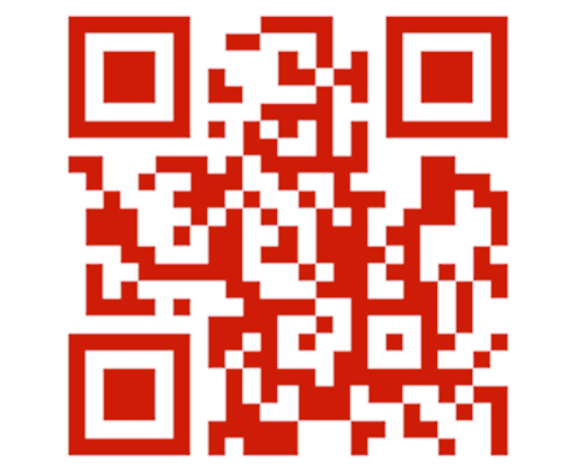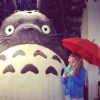
Textbooks are boring. There is too much text, few pictures and back in our school days you had to accept whatever was in the textbook and struggle through it. It was an uphill battle…both ways! But with all the advancements and conveniences of technology, why not bring a little of the 21st century into the classroom?
Textbooks around Japan have been incrementally upping their game with QR codes, “hip” songs and whatever else to keep students entertained and excited about learning. But sometimes these advances in textbook technology don’t provide any benefit, and actually confuse more than they teach.
It all started when a bored student in Japan found an innocuous QR code in the middle of their math textbook.
なんかさ、数学の教科書にQRコードのってたから、おもしろ半分やってみたら、こんなん出てきた爆笑 pic.twitter.com/OpgFFNfFkZ
— ふじもとあみ (@amifujimoto0828) December 22, 2014
Seems a little odd at first, why are their bonus materials not included within the textbook itself? Perhaps it’s extra material that is supplemental to the textbook. Why waste trees when students can access the information online? Good job, 21st century math textbook! Way to get with the times…is what someone might think when coming across this new technology. That is until you actually read the information linked from the QR code and it tells you:
▼ “Susume-kun’s Profile. He is 10cm tall, likes the school trees and doesn’t like tongue twisters.”
https://twitter.com/k_kmg/status/437830623642664960Why is there a profile? How is this related to math? Amazingly, this isn’t the only troll-like QR code found in the textbook.
▼Haha…take that Susume-kun! A tongue twister!
https://twitter.com/kishibe_roru/status/350977818240380928A lot of Japanese Twitter users were able to find QR codes from their textbooks that didn’t even work.
▼Should we be angry that it doesn’t work, or laugh that a broken QR code made it into a printed textbook?
https://twitter.com/Gocchan06/status/380882115719475200Another user found a QR code in their Spanish textbook, and thought it would be some helpful pronunciation tips or some listening questions. Instead they found this.
▼“Spain Bar! There are lots of delicious tapas at a Spain Bar. Which one do I chose? It’s so hard.”
https://twitter.com/lok311/status/356768978657492992The information at the end of an industrial arts textbook offered this friendly suggestion:
▼“You read it. Now go make something.”
https://twitter.com/karaagess/status/499961141427073024It does seem that some QR codes are being used for their intended purpose, one such case offered a ton of QR codes, each linking to a little video to help describe the intended material.
▼Why read a textbook when you can read a textbook AND watch movies?
https://twitter.com/Tocolinnn/status/399534600638042114QR codes in textbooks are clearly hit or miss, but that should improve with time. But what about the actual content of the textbooks? Let’s just say many were surprised by some of the materials, especially in music textbooks because it’s not just Beethoven and his buddies anymore! Out with the “classical” and in with the “nu metal.” Students now get this abbreviated and incredibly messy history of rock in high school music textbooks.
▼The “British Invasion” was important, so it’s in pink.
https://twitter.com/Porkeyhirayama/status/546303526054268929▼This is so hard to understand. “WHY JAPANESE PEOPLE…WHY?!?”
ちかごろの高校音楽の教科書、ロックのページに「まず聴いてみてください、興味を持ってほしいのです」って書いてあってよい pic.twitter.com/ytnmcEsydN
— つくし (@Tukusi37) March 5, 2013
More often than not, many people found some odd musical choices in the music textbooks. From the inclusion of Japanese pop and anime songs to “Surfin’ USA” and information about the score from 2001: A Space Odyssey, these textbooks seem to be doing what they can to keep up with the times.
▼A song from the anime Blue Seed.
娘の音楽の教科書を見ていたら…。ちょっ!これ!ブルーシードの劇中歌じゃん!ここまでアニソンが教育に進出しているとは…。 pic.twitter.com/4AklBEr6Z0
— まゆのピンクのワニ “レイン” (@mpw_rain) December 21, 2014
▼Surfin’ USA! Every child needs to sing this, right? Right!
中学の音楽の教科書に載っている「サーフィン・U.S.A.」。 pic.twitter.com/41fXgJQizv
— allsummerlong64 (@allsummerlong64) December 19, 2014
Japanese Twitter users continued to express their surprise when they read some textbooks and discovered that Mozart was a Freemason, Hatsune Miku is considered part of Japanese history and lastly a grim chart that shows that singers make very little money.
https://twitter.com/tw2sn/status/553245503211585536 https://twitter.com/k1218shootingst/status/467345688800407553▼Selling 1000 CDs at about US$25 will make about $8,380. Looks like we won’t be making that RocketNews24 band in Japan…
ふと目に付いたから、学校の教科書読んでみた。本当に日本の音楽業界は厳しいんやなって思った(´・_・`)3000円のCDを10万枚売ってもアーティストには1000万くらいしか入らんねんで?きっついわー。 pic.twitter.com/Aov7sitDNO
— ...Y♡ (@y_sorao26) January 1, 2015
It’s the teacher’s job to keep their students engaged, but that doesn’t mean a little help from the textbook isn’t welcome. These odd and seemingly out-of-place anecdotes probably seem useless to those who are finished with school, however, perhaps a little Hatsune Miku is just what a Japanese student needs to keep turning the page and learn more.
The more current and relevant a textbook is to the user, the more likely the student will use it, which is probably why there is so much pop culture appearing in them. Besides, it gives textbook makers a good excuse to update their books every year to keep them relevant, and force students to buy the newest copies. You’ll find this theory in the economics textbook under “Cha-ching!”
Source: Naver Matome

 Japanese student draws functional QR code on school chalkboard, you’ll never guess where it leads
Japanese student draws functional QR code on school chalkboard, you’ll never guess where it leads Tokyo’s new rental umbrella service is perfect for sudden showers, staying dry on the cheap
Tokyo’s new rental umbrella service is perfect for sudden showers, staying dry on the cheap Students go nearly a year without textbooks after teacher forgets to hand them out
Students go nearly a year without textbooks after teacher forgets to hand them out Korean students give their textbook characters fantastic fashion makeovers
Korean students give their textbook characters fantastic fashion makeovers Dark Horizon textbooks go beyond “Hello my name is…” to “Who are you calling a bitch, bitch!”
Dark Horizon textbooks go beyond “Hello my name is…” to “Who are you calling a bitch, bitch!” McDonald’s new Happy Meals offer up cute and practical Sanrio lifestyle goods
McDonald’s new Happy Meals offer up cute and practical Sanrio lifestyle goods All-you-can-drink Starbucks and amazing views part of Tokyo’s new 170 meter-high sky lounge
All-you-can-drink Starbucks and amazing views part of Tokyo’s new 170 meter-high sky lounge More foreign tourists than ever before in history visited Japan last month
More foreign tourists than ever before in history visited Japan last month Studio Ghibli glasses cases let anime characters keep an eye on your spectacles
Studio Ghibli glasses cases let anime characters keep an eye on your spectacles Beautiful Sailor Moon manhole cover coasters being given out for free by Tokyo tourist center
Beautiful Sailor Moon manhole cover coasters being given out for free by Tokyo tourist center We try out “Chan Ramen”, an underground type of ramen popular in the ramen community
We try out “Chan Ramen”, an underground type of ramen popular in the ramen community Starbucks reopens at Shibuya Scramble Crossing with new look and design concept
Starbucks reopens at Shibuya Scramble Crossing with new look and design concept Mister Donut ready to make hojicha dreams come true in latest collab with Kyoto tea merchant
Mister Donut ready to make hojicha dreams come true in latest collab with Kyoto tea merchant Japanese customer finds run-in with “Indian” convenience store clerk a refreshing experience
Japanese customer finds run-in with “Indian” convenience store clerk a refreshing experience Why is Japan such an unpopular tourist destination?
Why is Japan such an unpopular tourist destination? Disney princesses get official manga makeovers for Manga Princess Cafe opening in Tokyo
Disney princesses get official manga makeovers for Manga Princess Cafe opening in Tokyo Beautiful new Final Fantasy T-shirt collection on the way from Uniqlo【Photos】
Beautiful new Final Fantasy T-shirt collection on the way from Uniqlo【Photos】 Is the new Shinkansen Train Desk ticket worth it?
Is the new Shinkansen Train Desk ticket worth it? Foreign English teachers in Japan pick their favorite Japanese-language phrases【Survey】
Foreign English teachers in Japan pick their favorite Japanese-language phrases【Survey】 Japanese convenience store packs a whole bento into an onigiri rice ball
Japanese convenience store packs a whole bento into an onigiri rice ball Studio Ghibli releases Kiki’s Delivery Service chocolate cake pouches in Japan
Studio Ghibli releases Kiki’s Delivery Service chocolate cake pouches in Japan Japan’s bone-breaking and record-breaking roller coaster is permanently shutting down
Japan’s bone-breaking and record-breaking roller coaster is permanently shutting down New definition of “Japanese whiskey” goes into effect to prevent fakes from fooling overseas buyers
New definition of “Japanese whiskey” goes into effect to prevent fakes from fooling overseas buyers Our Japanese reporter visits Costco in the U.S., finds super American and very Japanese things
Our Japanese reporter visits Costco in the U.S., finds super American and very Japanese things Studio Ghibli unveils Mother’s Day gift set that captures the love in My Neighbour Totoro
Studio Ghibli unveils Mother’s Day gift set that captures the love in My Neighbour Totoro Foreign passenger shoves conductor on one of the last full runs for Japan’s Thunderbird train
Foreign passenger shoves conductor on one of the last full runs for Japan’s Thunderbird train Domino’s Japan now sells…pizza ears?
Domino’s Japan now sells…pizza ears? New Japanese KitKat flavour stars Sanrio characters, including Hello Kitty
New Japanese KitKat flavour stars Sanrio characters, including Hello Kitty Kyoto creates new for-tourist buses to address overtourism with higher prices, faster rides
Kyoto creates new for-tourist buses to address overtourism with higher prices, faster rides Sales of Japan’s most convenient train ticket/shopping payment cards suspended indefinitely
Sales of Japan’s most convenient train ticket/shopping payment cards suspended indefinitely Sold-out Studio Ghibli desktop humidifiers are back so Totoro can help you through the dry season
Sold-out Studio Ghibli desktop humidifiers are back so Totoro can help you through the dry season Japanese government to make first change to romanization spelling rules since the 1950s
Japanese government to make first change to romanization spelling rules since the 1950s Ghibli founders Toshio Suzuki and Hayao Miyazaki contribute to Japanese whisky Totoro label design
Ghibli founders Toshio Suzuki and Hayao Miyazaki contribute to Japanese whisky Totoro label design Doraemon found buried at sea as scene from 1993 anime becomes real life【Photos】
Doraemon found buried at sea as scene from 1993 anime becomes real life【Photos】 Tokyo’s most famous Starbucks is closed
Tokyo’s most famous Starbucks is closed One Piece characters’ nationalities revealed, but fans have mixed opinions
One Piece characters’ nationalities revealed, but fans have mixed opinions We asked a Uniqlo employee what four things we should buy and their suggestions didn’t disappoint
We asked a Uniqlo employee what four things we should buy and their suggestions didn’t disappoint Princesses, fruits, and blacksmiths: Study reveals the 30 most unusual family names in Japan
Princesses, fruits, and blacksmiths: Study reveals the 30 most unusual family names in Japan Send a free drink to a friend with Japan’s newest coinless vending machines【Video】
Send a free drink to a friend with Japan’s newest coinless vending machines【Video】 Futuristic drinks stand in Tokyo lets you order cute, personalised beverages from your phone
Futuristic drinks stand in Tokyo lets you order cute, personalised beverages from your phone Learn English with Assassination Classroom
Learn English with Assassination Classroom Revealed! Japan’s top 10 handsome samurai【Photos】
Revealed! Japan’s top 10 handsome samurai【Photos】 Mr. Sato has time-travelled to the year 3030 with impressive sushi technology
Mr. Sato has time-travelled to the year 3030 with impressive sushi technology Pokémon fan creates spectacular 3D hologram battle dome entirely from scratch【Video & Pics】
Pokémon fan creates spectacular 3D hologram battle dome entirely from scratch【Video & Pics】 Tokyo taxi company to release smartphone app with battling princesses
Tokyo taxi company to release smartphone app with battling princesses What’s wrong with English education in Japan? Pull up a chair…
What’s wrong with English education in Japan? Pull up a chair… Singapore’s Home for Hope Campaign finds homes for shelter dogs…at IKEA!
Singapore’s Home for Hope Campaign finds homes for shelter dogs…at IKEA! How to use Japan’s new self-checkout supermarket carts
How to use Japan’s new self-checkout supermarket carts Lawson begins first self-service convenience store in Tokyo, no line-ups necessary
Lawson begins first self-service convenience store in Tokyo, no line-ups necessary We visit Japanese fast food chain Dom Dom’s upscale branch for a taste of luxury
We visit Japanese fast food chain Dom Dom’s upscale branch for a taste of luxury Catch trendy Pokémon at Harajuku’s Takeshita Street for a limited time
Catch trendy Pokémon at Harajuku’s Takeshita Street for a limited time Japanese company invents “Spring Santa” – We love the concept, but it’s actually a little creepy…
Japanese company invents “Spring Santa” – We love the concept, but it’s actually a little creepy… Handy portable battery charging service now available in downtown Tokyo for just 108 yen
Handy portable battery charging service now available in downtown Tokyo for just 108 yen Low-quality paper cranes folded by young gyaru – Japan’s newest weird capsule toys
Low-quality paper cranes folded by young gyaru – Japan’s newest weird capsule toys
Leave a Reply